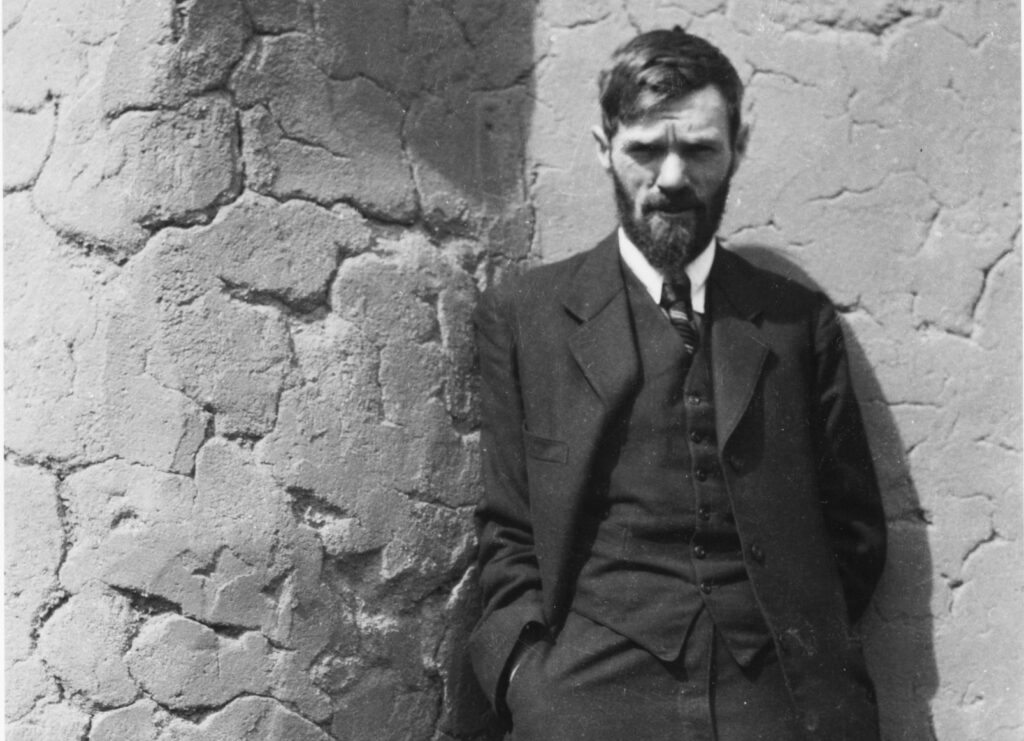The house is so quiet now
The vacuum cleaner sulks in the corner closet,
Its bag limp as a stopped lung, its mouth
Grinning into the floor, maybe at my
Slovenly life, my dog-dead youth.
I’ve lived this way long enough,
But when my old woman died her soul
Went into that vacuum cleaner, and I can’t bear
To see the bag swell like a belly, eating the dust
And the woolen mice, and begin to howl
Because there is old filth everywhere
She used to crawl, in the corner and under the stair.
I know now how life is cheap as dirt,
And still the hungry, angry heart
Hangs on and howls, biting at air.
Howard Nemerov: A Brief Biography
Born in 1920 in New York City, Howard Nemerov lived his early life in the city and attended the exclusive Fieldston School — where he was a fine student and an excellent athlete — before matriculating at Harvard. After graduating from Harvard in 1941, Nemerov enlisted in the Royal Canadian Air Force, then in the Eighth U.S. Army Air Force in England. He was discharged in 1945.
Immediately after the war, Nemerov and his English wife lived in New York City, where Nemerov wrote The Image and the Law, his first collection of poems, but they soon found themselves in need of money and Nemerov took a job teaching English at Hamilton College in upstate New York. In 1948, Nemerov left Hamilton and began teaching at Bennington College in Vermont, where he stayed until 1966, at which point he moved to Brandeis University near Boston. In 1969, Nemerov began teaching at Washington University in St. Louis and made St. Louis his home for much of the rest of his life.
By 1948, Nemerov had begun writing in earnest. After The Image and the Law in 1947, he published a novel, The Melodramatists, in 1949, and then Guide to the Ruins, the collection in which “The Phoenix” appears, in 1950. Over the next decades, Nemerov continued to teach, write poetry, fiction, and criticism, and to win the respect of his peers. He has won numerous prizes, grants, and fellowships, most notably the Consultancy in Poetry at the Library of Congress in 1963-1964, a Guggenheim Fellowship in 1968-69, an Academy of American Poets Fellowship in 1970, election to the American Academy of Arts and Letters in 1976, and the Pulitzer Prize for his Collected Poems of Howard Nemerov in 1978. In 1988, he was named Poet Laureate of the United States. Nemerov died in 1991.
Introduction of Poem “The Vacuum”
Although he had a great deal of success and became a very prominent poet, Howard Nemerov never has been a great favorite of academics, and as a result today he is not much read. Part of the problem is that Nemerov bucked trends: at a time (the 1940s and 1950s) when T.S. Eliot’s and Ezra Pound’s brand of literary modernism and experimentation dominated the world of English poetry, Nemerov looked back to traditional forms and regular rhythms. Nemerov did not reject modernism in the way that other poets — Peter Viereck, for instance, or Philip Larkin — did. However, neither did Nemerov fully embrace modernism’s allusiveness, difficulty, and radical experimentation.
Nemerov has been called “unromantic” in his treatment of nature, and frequently cited as employing “science” in his material. He is acutely romantic in many of his poems — practically an anachronism in his view of science and spirituality, especially as they meet on fairly simple terms in formalist poems. In the poems such as “The Vacuum,” he joins the ranks of those poets, who like T.S.Elliot, write poetry on simple things like a vacuum cleaner which is easily understandable to the lay man.
Critical Summary
Howard Nemerov is a successful and prominent poet. He never has been the most well-known poet in the circles of academics, and as a result today he is not much read. It is because he disregarded trends. As compared to Eliot’s and Ezra Pound’s brand of literary innovations and trends which mostly influenced the modern English poetry, Nemerov reverted to conventional forms and regular rhythms. He did not outrightly reject modernism in the manner that other poets like Peter Viereck or Philip Larkin did. However, he did not fully adopt the obscurity of modernism in poetry, and consequently he was not in view of radical experimentations.
Nemerov has been always “unromantic” in treating the nature, and he recurrently employed “science” in his selection of substance. He is extremely romantic in some of his poems. He has especially treated science and spiritualism as practical subjects in his poetry. They are presented and elaborated in simple poetic terminology and easily understandable to the readers. They have been treated in the most formal way. In the poems like “The Vacuum,” he simply keeps himself shoulder to shoulder with T. S. Elliot. He joined the ranks of those poets who wrote poetry on simple things like a vacuum cleaner which is easily understandable to the lay man. The vacuum is a symbol of his wife and the life they had passed together.
It is both an association between the speaker and his wife, as well as a figure of death–it “grins” into the ground, displaying not only the conventional figure of death (grinning as it devours people) but also the present location of his wife (underground); and it likewise has a “stopped lung,” linking the vacuum’s bag with his wife’s dead body, and presenting a very explicit picture of his wife and while also dislodging it.
The last stanza, where Nemerov alliterates and makes consonance (e.g., “Hungry, angry heart hangs on and howls”), is really conspicuous because the vacuum is not only a link between his wife (since she used it so often) and death (as pointed out earlier) but also with the speaker since the biting at air is a vividly poetic depiction of both what a (personified) vacuum does and what a distressed husband does when his wife has died. So in other words the vacuum is not only a symbol of the taking apart of husband and wife but also a linking point between them.
Comparing his dead wife with a “Vacuum” cleaner, the poet basically associates her with the household duties. Women are basically known for their interest in the duties inside their homes and, especially, they try to keep their houses clean and neat. The poem also reveals that the poet’s dead wife was a clean and neat lady. The poet compares her with the vacuum machine so as to show that she had deep impact on his life after her heartrending departure; and a vacuum has been created in his life.
In “The Vacuum”, Howard Nemerov has used this cleaning machine to symbolize the dead lady. Various figures of speech have been utilized to convey the speaker’s memories and feelings. When he looks at the machine, he remembers his wife and the life they had together. He describes his memories by using different figures of speech such as personification, similes, metaphors, and traditional symbols which, in a way, leave a lasting effect on the readers.
The noise of the vacuum cleaner symbolizes the activities of life inside the home but since his wife has passed away, the machine lies in the corner of the home without any noise and activity. This has brought a vacuum in the poet’s life as his “house is so quiet now.” The line “The vacuum cleaner sulks in the corner closet”, where the poet personifies his dead wife with the machine that lies idle now, beautifully conveys the effect of the boring and dull life that the poet is destined to live now.
The use of similes is another figure of speech that the poem appears with. The vacuum cleaner (bag limp as a stopped lung) makes a comparison between the non-functioning vacuum bag and the non-breathing human lung of his dead wife. Traditionally, Lungs are a symbol of life and breathing. The vacuum cleaner is as inactive as the poet’s dead wife is; thus adding to the machine’s personification as a living being but dead now.
The poet also uses another simile when he says that he can no longer operate the machine, as he can not afford to hear the noise “To see the bag swell like a belly.” His life is “cheap as dirt” which symbolizes how useless the life of the poet is without his wife.
The vacuum cleaner is also the clean soul of the speaker’s wife. He treats it as a person and remembers her when he looks at it. In the past, his wife was clean and neat as the machine signifies which she once used for keeping the house clean. Presently, the poet’s life is dirty and slovenly and he can no longer exhaust himself by using the machine to keep the house clean and neat as his wife did when she was alive (maybe my/slovenly life, my dog-dead youth).
The speaker metaphorically describes that there is “old filth everywhere” in his house because the one that cleaned the house is no longer here. His “heart hangs on and howls; biting at air” is another metaphor which means that there was a noise in his life when his wife was alive because she used to operate the machine, but now he makes howling noises out of the pain that he feels after the loss of his wife.




